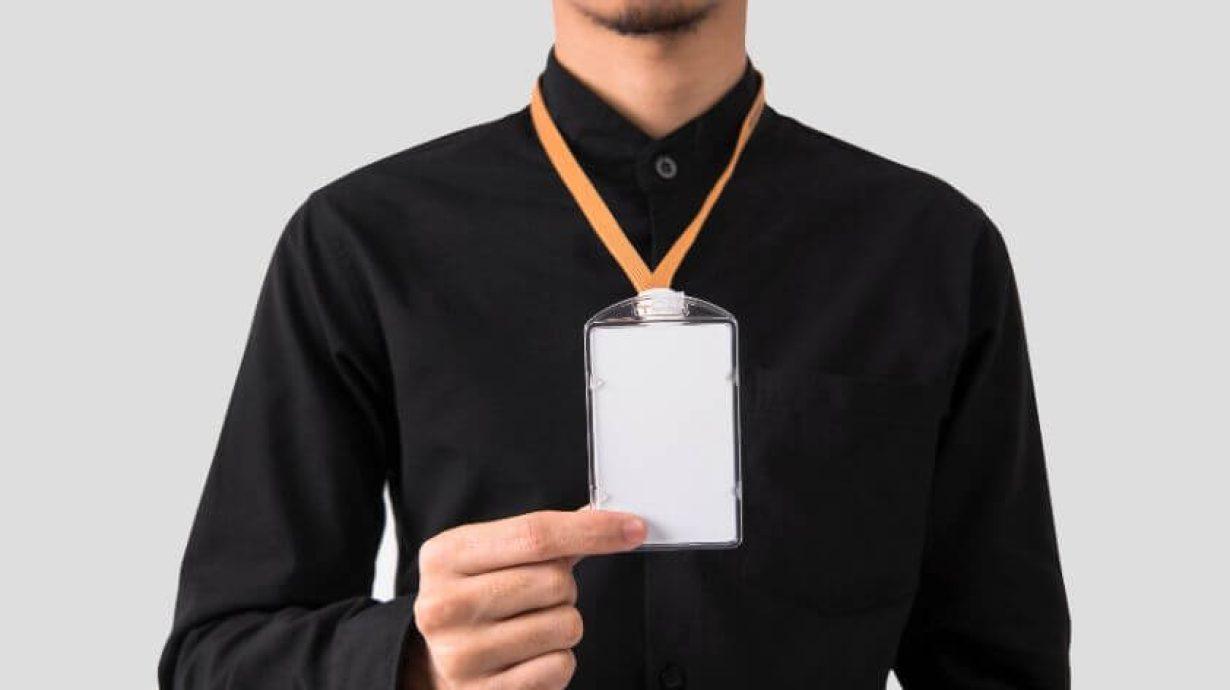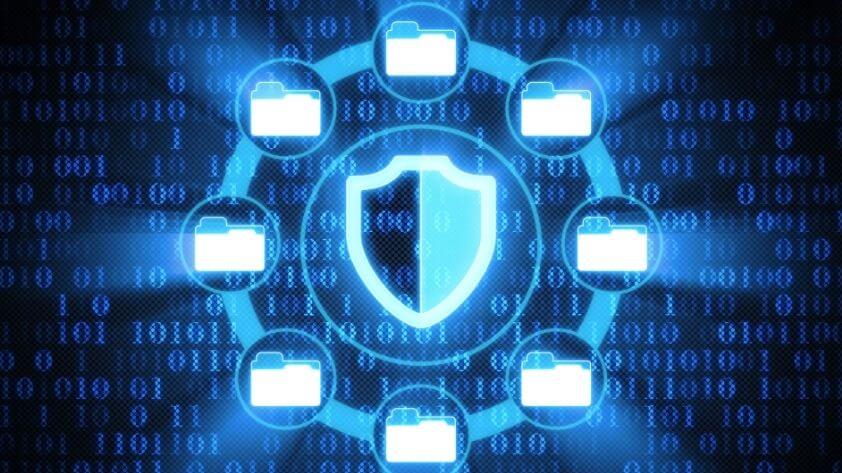The Plus SE RFID Card: Enhancing Security and Efficiency in Employee Management
Introduction
In modern businesses, the employee card management system is not just an identity verification tool; it also relates to security, efficiency, and user experience. With the fast-paced development of technology, traditional employee cards can no longer meet the increasingly stringent security requirements, especially regarding data protection and identity verification.
As an innovative solution, the Plus SE RFID card offers heightened security and more efficient management, paving the way for companies to smoothly transition to a higher standard security system.

Understanding Plus SE RFID Cards
Plus SE card is an upgraded version of the established Classic technology, designed to meet the growing needs of businesses in information security. It maintains compatibility with classic cards and can be easily integrated into existing systems while delivering stronger security performance and scalability. By incorporating higher security standards like AES encryption, the Plus SE card allows companies to smoothly transition to a higher level of security without the need to completely replace hardware.
Core Features
- Memory Structure and Compatibility: Plus SE offers 1KB of EEPROM memory, follows a linear memory structure, and is fully compatible with Classic. This means that when companies upgrade to Plus SE, they don’t need to modify their existing system’s memory structure, ensuring a smooth upgrade process.
- Security: Plus SE cards support AES-128 encryption and provide strong data authentication, integrity protection, and encryption functions. With AES encryption technology, Plus SE cards effectively prevent unauthorized access and data tampering, ensuring that the sensitive data of businesses is reliably protected.
- Security Levels SL1 and SL3: Plus SE supports two security levels: SL1 and SL3. The SL1 security level supports basic encryption functions, while the SL3 level provides stronger security protection, using AES authentication technology to further enhance the card’s authentication and data protection capabilities. The SL3 level allows Plus SE to meet the demands of enterprise environments requiring high security, ensuring system reliability and security.
Compatibility with Classic
One of the biggest advantages of Plus SE is its compatibility with Classic. Businesses can easily incorporate Plus SE cards based on their existing Classic systems without the need for large-scale equipment replacement or system redesign. This compatibility not only significantly reduces upgrade costs but also allows companies to gradually transition to higher security standards without disrupting existing business processes.

How Plus SE Enhances Security for Employee Access
As companies ramp up their security requirements, ensuring the safety of employees accessing sensitive areas becomes crucial. The Plus SE RFID cards are packed with advanced security features that effectively protect employee identity information and prevent unauthorized access.
AES Encryption and Authentication
- Application of AES-128 Encryption in Plus SE: AES-128 encryption is one of the core security technologies for Plus SE cards. It safeguards the data transmitted between the employee card and the card reader, effectively preventing data theft or tampering. During the authentication process, Plus SE employs the AES encryption standard to secure communication, ensuring that only authorized personnel can authenticate and preventing unauthorized access.
- Multiple Authentication Mechanism: Plus SE supports multi-sector authentication, which is one of its standout security features. Each sector can be authenticated using an independent encryption key, meaning that even if the key for one sector is compromised, the remaining sectors remain secure. This multiple authentication mechanism enhances the system’s protective capabilities, boosts overall security, and mitigates the risks associated with a single authentication failure.
Anti-tampering and Data Integrity Protection
- Anti-tampering Mechanism: When writing AES keys, the Plus SE card employs an anti-tampering mechanism. This ensures that data isn’t compromised during storage or transmission and effectively prevents incomplete or corrupted data from being written to the card, even in the event of an incident such as power failure. This way, sensitive information like keys remains uncompromised, bolstering data security.
- Data Integrity Protection: Through AES encryption and authentication mechanisms, Plus SE can effectively ensure that the data stored on the card isn’t forged or tampered with. These encryption and authentication features provide robust protection for sensitive data, such as employee information and access rights, ensuring the integrity and reliability of the system. Even if an attacker attempts to copy or tamper with card data, the system will detect and reject illegal operations through the authentication mechanism.
Efficient Detection of Illegal Cards
Plus SE can efficiently identify and prevent illegal cards from entering the system through its built-in AES authentication mechanism.
When an employee’s card connects to the system, Plus SE verifies the card’s legitimacy using the AES authentication mechanism. If the card lacks the correct key or fails authentication, the system will immediately identify it and deny access. This mechanism effectively prevents illegal or counterfeit cards from accessing the system, enhancing overall system protection and ensuring that only authorized personnel can enter sensitive areas.

Enhancing Operational Efficiency with Plus SE
As enterprises’ demands for both efficiency and security grow, finding ways to enhance operational efficiency while ensuring security has become a key challenge in enterprise management systems. With its superior performance and flexible features, Plus SE RFID cards aid companies in optimizing card management, enhancing data transmission efficiency, and supporting the concept of virtual cards as part of digital transformation, ultimately boosting overall operational efficiency.
Simplifying Card Management and Deployment
- Compatible with Classic for Gradual Upgrades: Plus SE cards are fully compatible with existing Classic systems, allowing enterprises to upgrade security gradually without the need for extensive equipment or system replacements. This gradual upgrade approach enables businesses to flexibly respond to future security needs while avoiding significant equipment update costs. Companies can enhance security simply by replacing employee cards while keeping the existing infrastructure intact. This greatly simplifies the difficulties associated with card management and deployment, making the transition process smoother.
- Streamlining System Maintenance: Thanks to the high compatibility between Plus SE cards and Classic in terms of memory structure and operating mode, system administrators can conduct maintenance and management more efficiently within the existing system framework without needing to retrain operators or adjust a multitude of hardware devices. This enhances system stability and management convenience, ultimately reducing operational and maintenance costs.
Fast Communication and Data Transmission Speed
- Higher Data Transmission Rate: Plus SE supports data transmission speeds of up to 848 kbit/s, significantly improving the efficiency of data exchange with the card reader. This fast communication means that when employees enter and exit, data can be processed quickly, and the system responds more promptly. Whether it’s multiple card swipes, numerous individuals passing through the access control system simultaneously, or large-scale identity verification, Plus SE handles these tasks efficiently, avoiding the jamming and delays caused by slow transmission speeds in traditional access control systems.
- Reducing Operational Time and Improving Work Efficiency: High-speed data transmission cuts down waiting times for employees during card swipes and access control verifications, thereby boosting work efficiency and employee satisfaction. Especially during peak periods, rapid card authentication can effectively prevent congestion, enhance entry and exit efficiency, and ensure smooth personnel flow. This has a significant optimization effect for enterprises that require high-frequency access control operations, particularly in large office buildings or factory environments.
Virtual Card Concept
- Virtual Cards and Digital Transformation: In the context of digital transformation, an increasing number of companies are seeking more flexible and convenient methods for managing employee cards. Plus SE supports the concept of virtual cards, allowing employees to use virtual cards instead of physical ones for identity authentication and access control through smartphones or other mobile devices. Virtual cards can be managed and distributed via mobile apps or cloud platforms, greatly improving the flexibility and scalability of enterprise card management.
- Cloud and Mobile Support: With the backing of cloud services and mobile terminals, virtual cards provide companies with enhanced flexibility and convenience. Employees don’t need to carry physical cards; they can complete access control, attendance tracking, and other operations via mobile applications. Additionally, companies can easily manage and configure virtual cards through cloud platforms, adjusting access rights and adding or revoking card functionalities at any time without reissuing physical cards. This is highly significant for realizing digital management in enterprises, reducing reliance on physical cards, and improving resource utilization.

How Plus SE Prepares Your System for the Future
As enterprises pursue greater security and efficiency, future technologies and security standards are set to become pivotal development trends. Plus SE RFID cards not only provide current high-security solutions but also establish a solid foundation for future technological evolution and security upgrades.
Preparing for Future Security Upgrades
- Support for Future AES Security Standards: Plus SE cards are compatible with existing Classic systems and equip enterprises for a smooth transition to higher security standards like SL3. The SL3 security level utilizes AES encryption technology to provide enhanced authentication and data protection. Given that Plus SE supports AES-128 encryption, enterprises can achieve advanced security standards simply by upgrading the cards rather than completely overhauling their infrastructure. This approach allows businesses to gradually upgrade in response to changing security requirements without the need for large-scale equipment replacements, thus reducing costs and simplifying the transition process.
- Seamless Transition to High Security Levels: With Plus SE, companies can flexibly address future challenges associated with elevated security needs, ensuring that their security measures evolve in tandem with technological advancements without interruption. This forward-thinking design facilitates enterprises in responding to and upgrading against potential future security threats.
Support for Multiple Authentication Methods
- Flexible Authentication Technology: Plus SE not only supports traditional RFID technology but also accommodates various authentication technologies to offer more flexible methods. For instance, businesses can combine biometric technologies such as PIN codes, fingerprint recognition, facial recognition, and other modern authentication techniques to further bolster the security of employee cards. This multi-factor authentication approach enhances the rigor of identity verification and mitigates security vulnerabilities linked to a single authentication method.
- Increasing Adaptability and Security: The high compatibility of Plus SE cards allows different authentication technologies to be seamlessly integrated into a unified system, enabling companies to flexibly choose the most suitable authentication method based on their specific needs. Whether it’s simple PIN code verification in a low-risk area or biometric technology in a high-security zone, Plus SE provides robust support to ensure both security and system adaptability.
Adapting to the Future Development of the Internet of Things (IoT)
- Supporting IoT Application Flexibility: As Internet of Things (IoT) technology continually evolves, the versatility of Plus SE cards enables them to play a crucial role in applications such as smart buildings and smart parking. Integrating with IoT systems, Plus SE enables businesses to use it not only for traditional access control but also with smart devices, sensors, and cloud platforms for extensive digital management. For example, businesses can link employee cards with parking sensors, automated payment systems, and license plate recognition technology to provide workers with a seamless parking experience.
- Expanding the Boundaries of Digital Management: By supporting IoT applications, Plus SE aids companies in breaking new ground in digital management. Whether concerning access control in smart buildings or device management within an enterprise, Plus SE can become a vital component of an intelligent system, steering the company towards a more intelligent and automated operational direction. This capability for integration ensures that enterprises maintain technological leadership in the IoT era while enhancing resource management and operational efficiency.

Conclusion
The Plus SE RFID card not only offers enterprises enhanced security and operational efficiency, but it also lays a solid groundwork for future technology upgrades. By supporting AES encryption, flexible authentication methods, and compatibility with existing systems, it assists companies in streamlining employee management processes while boosting system performance and ensuring security. Whether it involves increased data transmission speeds or support for the virtual card concept, Plus SE can enable enterprises to achieve smarter and more efficient operational management.
More importantly, Plus SE is highly sustainable. It facilitates a seamless transition to higher security levels (like SL3) and can adapt to the future developments in the Internet of Things (IoT). This means that businesses can not only meet their current needs but also easily upgrade and expand their systems when facing the challenges introduced by future technological advancements.
If you’re looking to provide a safer and more efficient solution for upgrading your company’s employee management system, consider learning more about the Plus SE RFID card. Feel free to reach out to relevant experts to explore how this advanced technology can enhance your company’s security and operational efficiency while preparing for future intelligent management.

FAQs
Why is the Plus SE RFID card the perfect choice for upgrading enterprise access control systems?
The Plus SE RFID card is a top pick for upgrading enterprise access control systems, primarily due to its numerous compatibility and security benefits. First off, Plus SE is highly compatible with the existing Classic system, enabling businesses to upgrade simply by swapping out employee cards without overhauling the entire infrastructure. This gradual shift not only cuts down on equipment upgrade costs but also ensures that the current access control system continues to run smoothly. Moreover, Plus SE meets high security standards with AES-128 encryption, offering stronger data protection than traditional Classic cards, thus preventing unauthorized copying, tampering, or misuse. This means enhanced authentication security for businesses and a reduced risk of security vulnerabilities. Additionally, it supports advanced security features like multi-sector authentication and anti-tampering measures, making it an ideal choice for upgrading and reinforcing enterprise access control systems.
How does Plus SE enhance the efficiency of employee attendance management?
Plus SE RFID cards aren’t just for traditional access control—they can also greatly improve how businesses manage employee attendance. Firstly, with data transmission rates of up to 848 kbit/s, the verification and transfer speeds when employees swipe their cards are lightning-fast, significantly cutting down the waiting time during clocking in and out. This quick response helps avoid long lines of employees trying to clock in during peak times, boosting overall work efficiency and system responsiveness. Secondly, Plus SE supports virtual card technology, which permits clocking in and out via mobile apps, further increasing convenience and flexibility. These virtual cards are user-friendly for employees and lower management costs along with resource waste associated with physical cards. Furthermore, businesses can monitor employee entry and exit in real time through the system, ensuring accurate attendance data and minimizing loopholes or human errors.
How does Plus SE help businesses adapt to the evolving Internet of Things (IoT) landscape?
As IoT tech becomes mainstream, an increasing array of smart devices and systems need to blend seamlessly into an interconnected network. Plus SE is designed with this in mind. Its flexibility and compatibility enable integration with a wide range of smart devices and sensors, allowing expansion into various application scenarios. For instance, businesses can leverage Plus SE for more efficient access control in smart buildings. Not only can it control access, but it can also interface with lighting, HVAC, temperature control systems, and other building management systems to automatically adjust environmental settings, creating personalized workspaces. Plus, it works with smart parking systems, where employees can enter the parking lot with virtual or physical cards. The system recognizes parking spaces and calculates fees automatically, streamlining parking management. Also, it can connect with cloud platforms within the IoT environment to bring smarter and more digital management solutions to enterprises.
How does the Plus SE card maintain data integrity and resist tampering?
The Plus SE RFID card is built with robust mechanisms to protect data integrity and prevent tampering. Firstly, it uses AES-128 encryption technology to safeguard the data stored on the card and the communications between the card and the card reader, ensuring data security during transmission. This encryption standard effectively wards off data theft or tampering, preserving the integrity of employee authentication and access rights information. Additionally, Plus SE employs an anti-tear mechanism when writing AES keys, guaranteeing that data remains intact even in case of accidents during the writing process (like power outages). This adds an extra layer of protection for sensitive data on the card. Moreover, the card supports multi-sector authentication, where each sector is encrypted with its own key, preventing unauthorized access even if one key is compromised. These technical features make the Plus SE excel in data integrity protection and tamper resistance.
How does Plus SE facilitate smooth system transitions and upgrades?
Plus SE shares the same memory structure and operating mode as Classic, allowing businesses to gradually upgrade their technology without having to replace existing equipment or systems. This means companies can elevate security standards based on the existing Classic framework by merely swapping out employee cards, all without extensive equipment overhauls or system reconstruction. This approach not only cuts upgrade costs but also ensures business continuity, allowing daily operations to continue unaffected by system changes. Furthermore, Plus SE allows for flexible security level switching, enabling companies to gradually implement higher security tiers (like SL3) without ceasing system use, promoting a seamless transition while avoiding common technical glitches and security vulnerabilities associated with traditional upgrades. This compatibility and scalability offer long-term investment protection, ensuring that businesses can adapt to future technology changes without needing frequent large-scale investments or infrastructure overhauls.

RFID Antenna UHF
15-Meter Cable for UHF RFID Fixed Reader
UHF Tag
4″x2″ 860-960MHz UHF RFID Label RFID M4D
UHF Tag
4″x4″UHF RFID Label Alien H3 | ISO18000-6C
RFID Antenna UHF
5-Meter Cable for UHF RFID Fixed Reader
HF Card
ABS RFID KEY-FOB Tag RFID Classic 1K
HF Card
ABS RFID KEY-FOB Tag RFID Classic 4K
HF Card
ABS RFID KEY-FOB Tag RFID Ultralight C
HF Tag
ABS RFID KEY-FOB Tag RFID Ultralight EV1
LF Card
ABS RFID KEY-FOB Tag ATA5577
LF Card
ABS RFID KEY-FOB Tag EM4200
HF Card
ABS RFID KEY-FOB Tag EM4305
HF Card
ABS RFID KEY-FOB Tag RFID TAG 213